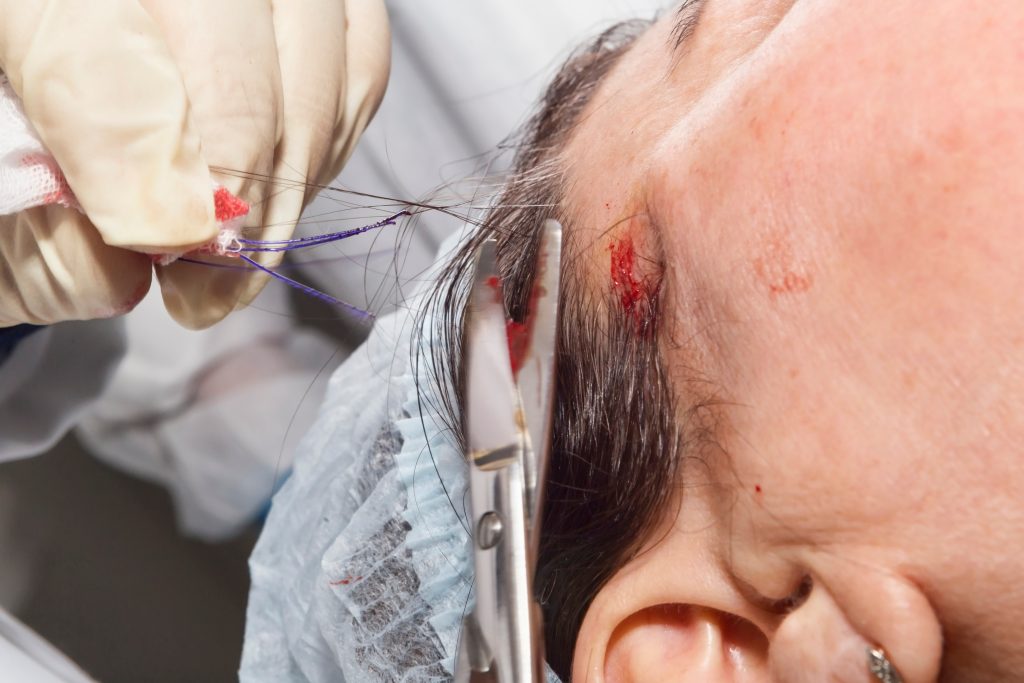Hair transplant surgery is an effective hair loss treatment for many people, but it’s also important to understand the anesthesia options and safety associated with the surgery. Anesthesia is essential to reduce pain during surgery and ensure patient comfort. In this column, we will explain in detail the anesthesia options for hair transplant surgery and the safety of each.
Anesthesia options
There are three main types of anesthesia used in hair transplant surgery:
local anesthesia
sedation anesthesia
general anesthesia
1. Local anesthesia
overview
Local anesthesia is a method of injecting an anesthetic only to the area where the surgery will be performed to numb the area. This is the most commonly used anesthesia method for hair transplant surgery.
advantage
Safety: Lower risks than general anesthesia.
Fast recovery: Recovery after surgery is relatively quick, and patients can return to their daily lives immediately.
Low cost: Cost is low compared to general anesthesia.
disadvantages
Conscious: The patient is conscious during the surgery and may feel the surgical process.
Local pain: You may feel some pain during the anesthesia injection.
security
Local anesthesia is very safe and has few serious side effects. The risks are considered low as long as it is done properly.
2. Sedation anesthesia
overview
Sedation anesthesia is an anesthesia method that is often used in conjunction with local anesthesia. When administered intravenously, it relaxes the patient and puts them in a state close to sleep.
advantage
Relaxation effect: Patients can undergo surgery in a relaxed manner, reducing the stress of surgery.
Decreased consciousness: During the surgery, the patient often becomes unconscious and does not remember the details of the surgery.
disadvantages
Cost: More expensive than local anesthesia alone.
Monitoring required: Heart rate and breathing must be monitored during sedation and anesthesia.
security
Although sedative anesthesia is generally safe, there are risks such as excessive sedation and respiratory depression, so it is important that it is managed by an experienced anesthesiologist.

3. General anesthesia
overview
General anesthesia is a method of anesthesia that leaves the patient completely unconscious. General anesthesia is not very common in hair transplant surgery, but it is sometimes chosen for major surgeries or at the patient’s request.
advantage
Completely unconscious: You will be completely unconscious during the surgery, so you will not feel the surgical process at all.
Complete pain relief: Completely eliminate pain during surgery.
disadvantages
High Risk: General anesthesia carries a risk of serious side effects and complications.
Slow recovery: Recovery after surgery is slow and usually requires observation in the hospital.
Expensive: It is more expensive than local anesthesia or sedation anesthesia.
security
General anesthesia requires advanced skill and experience, and is associated with risks. This is especially important for patients with heart or respiratory problems.
Safety comparison
Local anesthesia safety
Local anesthesia is the safest and most commonly used anesthesia method. Serious side effects are very rare as long as it is done under proper supervision.
Safety of sedation anesthesia
Sedative anesthesia can help patients relax when used in conjunction with local anesthesia, but requires proper supervision by an anesthesiologist. Although there is a risk of excessive sedation and respiratory depression, it is safe when performed by an experienced physician.
Safety of general anesthesia
General anesthesia carries higher risks than other anesthesia methods and should be used with caution, especially in patients with heart or respiratory problems. Appropriate facilities and the supervision of an experienced anesthesiologist are essential.
Factors influencing the choice of anesthesia
Size and complexity of surgery
The appropriate anesthesia method should be selected depending on the scale and complexity of the surgery. Local anesthesia is appropriate for small, simple surgeries, but larger surgeries may require sedation or general anesthesia.
patient’s health status
The patient’s health status also greatly influences the choice of anesthesia. Low-risk anesthesia methods are recommended for patients with heart or respiratory problems.
patient’s wishes
General anesthesia may be chosen if the patient wants to be completely unconscious during the procedure. However, you need to consider the costs and risks.
in conclusion
The choice of anesthesia for hair transplant surgery greatly influences the success of the procedure and patient comfort. Local anesthesia, sedative anesthesia, and general anesthesia each have advantages and disadvantages, and it is important to select the most appropriate anesthesia method depending on the patient’s health condition, the scale of the surgery, and the patient’s wishes. Appropriate management by an experienced physician is required to ensure safety. Before undergoing surgery, consult with your doctor to choose the anesthesia method that is best for you.
Hiro Clinic Hair Transplant
At Hiro Clinic, we recommend Natural Pro FUE treatment, which treats hairless areas where oral treatment or injection therapy is not effective, and leaves almost no visible scars. By harvesting hair roots from the back of the head and shaving the area, post-surgery management is easier, and only the required number is transplanted with a natural-looking finish. It can be performed as a same-day surgery using local anesthesia, provides gradual hair growth at an affordable price, and can be safely performed in Japan.








